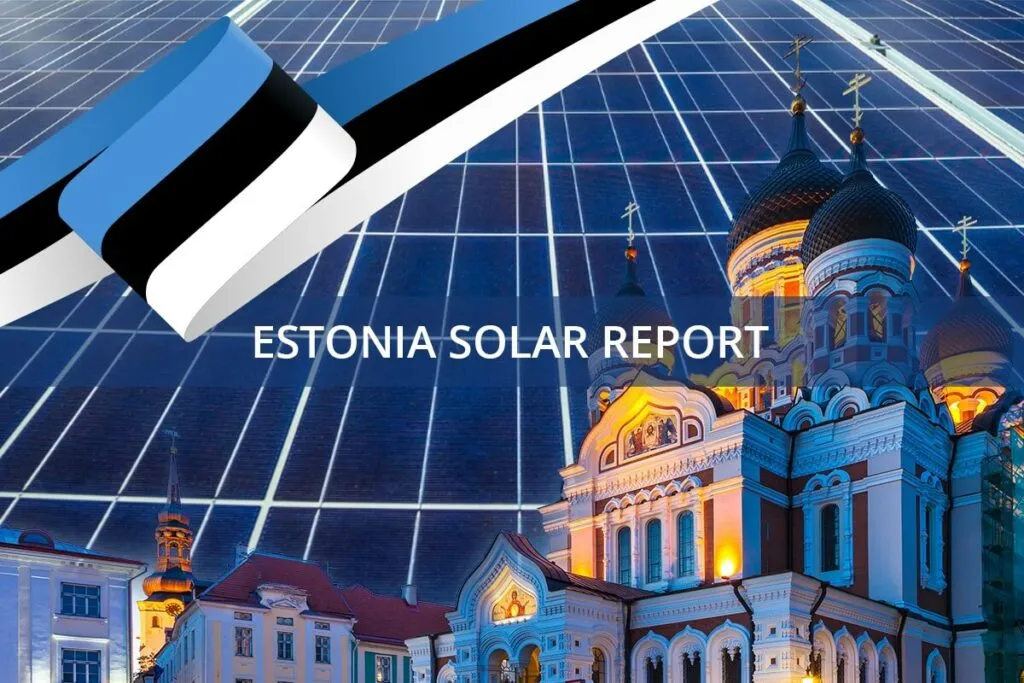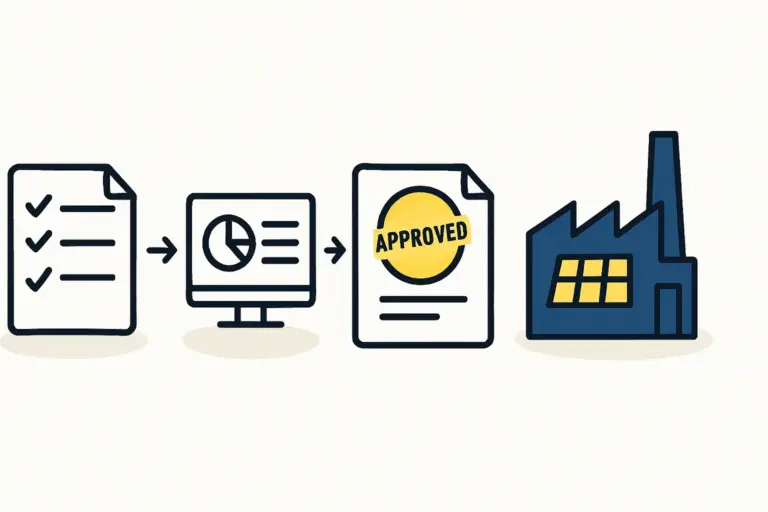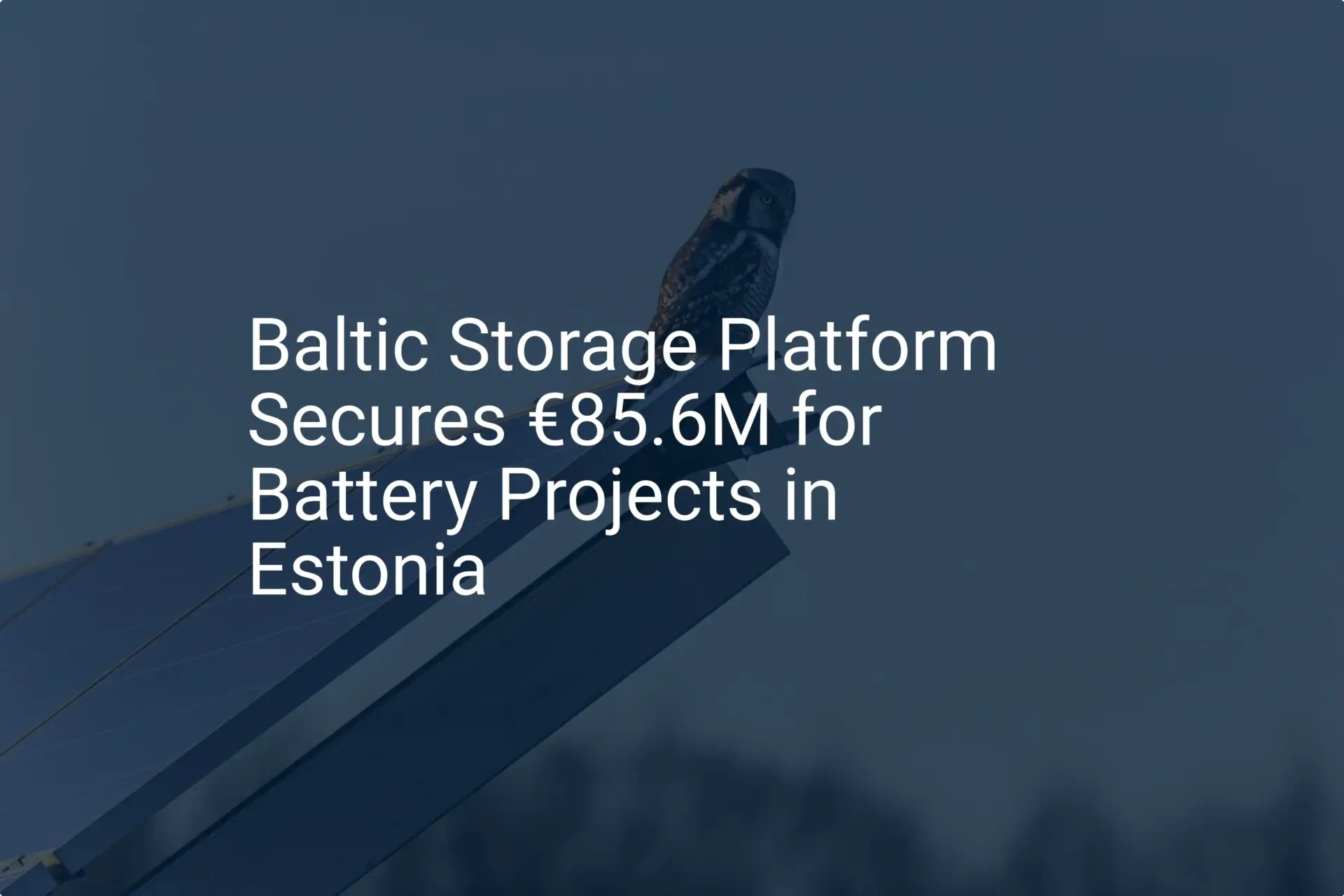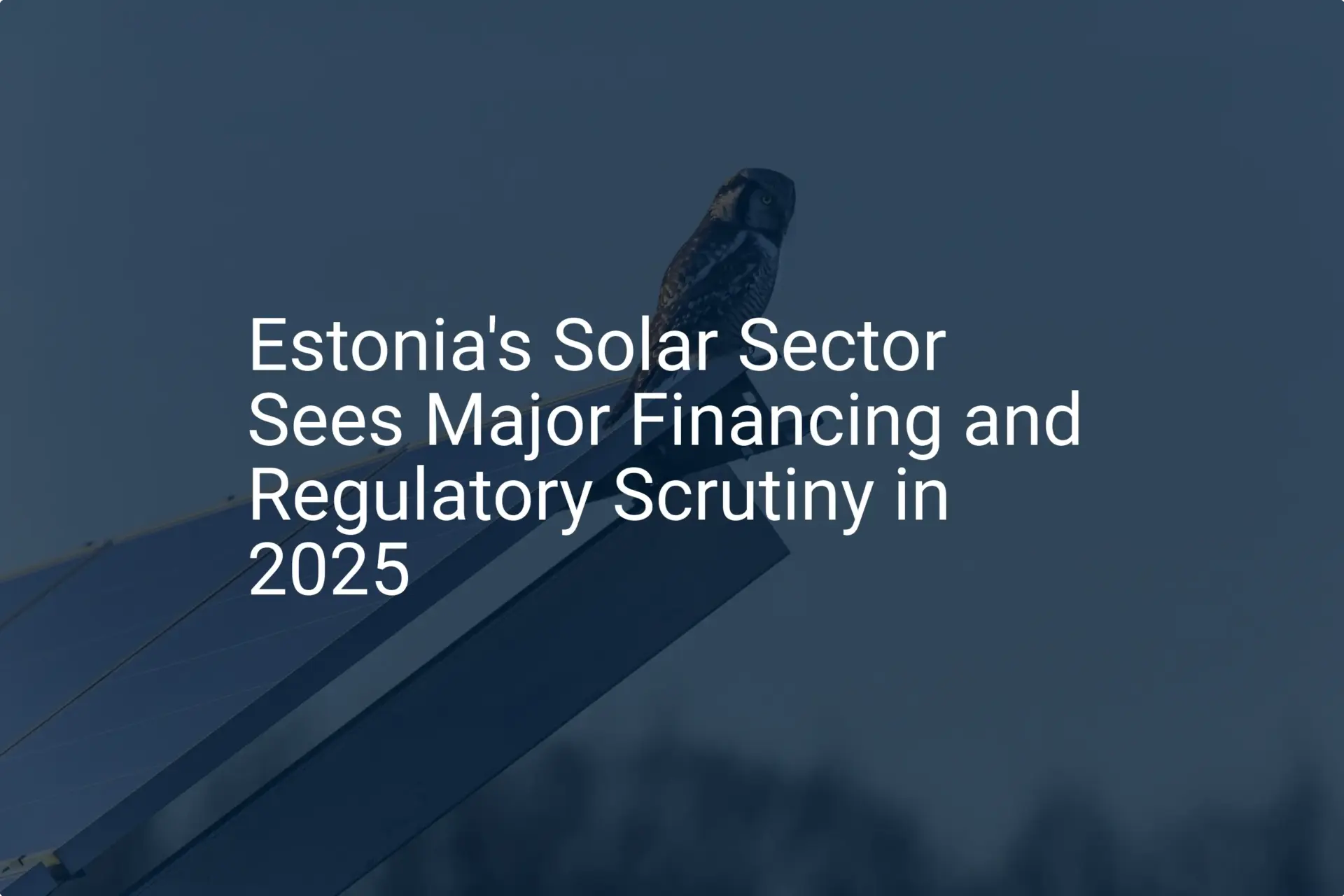Entrepreneurs planning to enter the solar manufacturing sector often focus on the initial capital investment—the cost of machines, the building, and raw materials. While these are significant, tangible expenses, a critical operational expenditure (OPEX) is too often underestimated: the cost of energy.
A factory’s location largely determines its energy cost structure, making an understanding of the local electricity market essential. Using Estonia as a case study, this article provides a framework for forecasting the energy costs of a typical 50 MW solar module production line. The principles discussed here apply to any entrepreneur evaluating factory locations, highlighting the need to move beyond a simple cost-per-kilowatt-hour estimate to a more sophisticated financial model.
Deconstructing the Industrial Electricity Bill in Estonia
For an industrial consumer in Estonia, the final price paid for electricity is a composite of several distinct components. Accounting for each one is essential to avoid significant forecasting errors. The total cost includes the wholesale energy price, transmission costs, and state-mandated taxes.
The Core Component: Nord Pool Spot Market Price
Estonia is part of Nord Pool, a pan-European power exchange where the wholesale price of electricity is not fixed. Instead, it is determined by supply and demand, changing hour by hour. This “spot price” can be highly volatile, influenced by factors such as weather conditions that affect renewable generation, the availability of conventional power plants, and the price of CO2 emission allowances.
For a factory operating multiple shifts, this means the cost of running a laminator at 3:00 AM could be substantially different from the cost at 3:00 PM. During periods of low demand and high wind generation, prices can be very low, while peaks in demand or generation shortages can cause prices to spike dramatically. Any business plan must account for this inherent volatility.
The Fixed Component: Network Service Fees
Regardless of the wholesale electricity price, a factory must pay a network service fee, also known as a grid fee. This charge is levied by the local Distribution System Operator (such as Elektrilevi in Estonia) to cover the costs of maintaining the physical electricity grid—the poles, wires, and substations that deliver power to the factory.
This fee is typically charged on a per-megawatt-hour (MWh) basis and can include a fixed monthly component based on the capacity of the grid connection. While more stable than the spot price, it represents a significant and unavoidable portion of the total energy cost.
The State-Mandated Component: Taxes and Levies
The final layer consists of government-imposed fees, such as Estonia’s renewable energy fee and its electricity excise duty. These fees, set by legislation and applied to every megawatt-hour consumed, can seem small individually but accumulate significantly over a year of industrial-scale consumption.
Estimating Annual Energy Consumption for a 50 MW Production Line
To calculate costs, the first step is to establish a baseline for consumption. Based on data from J.v.G. Technology GmbH turnkey projects, a semi-automated 50 MW solar module production line typically consumes between 2,000 and 3,000 megawatt-hours (MWh) of electricity per year. This is equivalent to 2 to 3 gigawatt-hours (GWh).
The primary drivers of this consumption are thermally intensive processes. The essential machines for a solar module production line with the highest energy demand include:
- Laminators: These machines use heat and pressure to encapsulate the solar cells.
- Framing and Curing Ovens: If a factory includes curing processes for adhesives, these require sustained heating.
- HVAC Systems: Maintaining a clean, climate-controlled environment is crucial for quality control and consumes a substantial amount of energy, particularly in a facility that requires specific temperature and humidity levels.
This consumption is directly tied to the factory’s operational schedule. A facility running three shifts, 24 hours a day, will have a different energy consumption profile than one running a single 8-hour shift and will be exposed to a wider range of hourly spot prices.
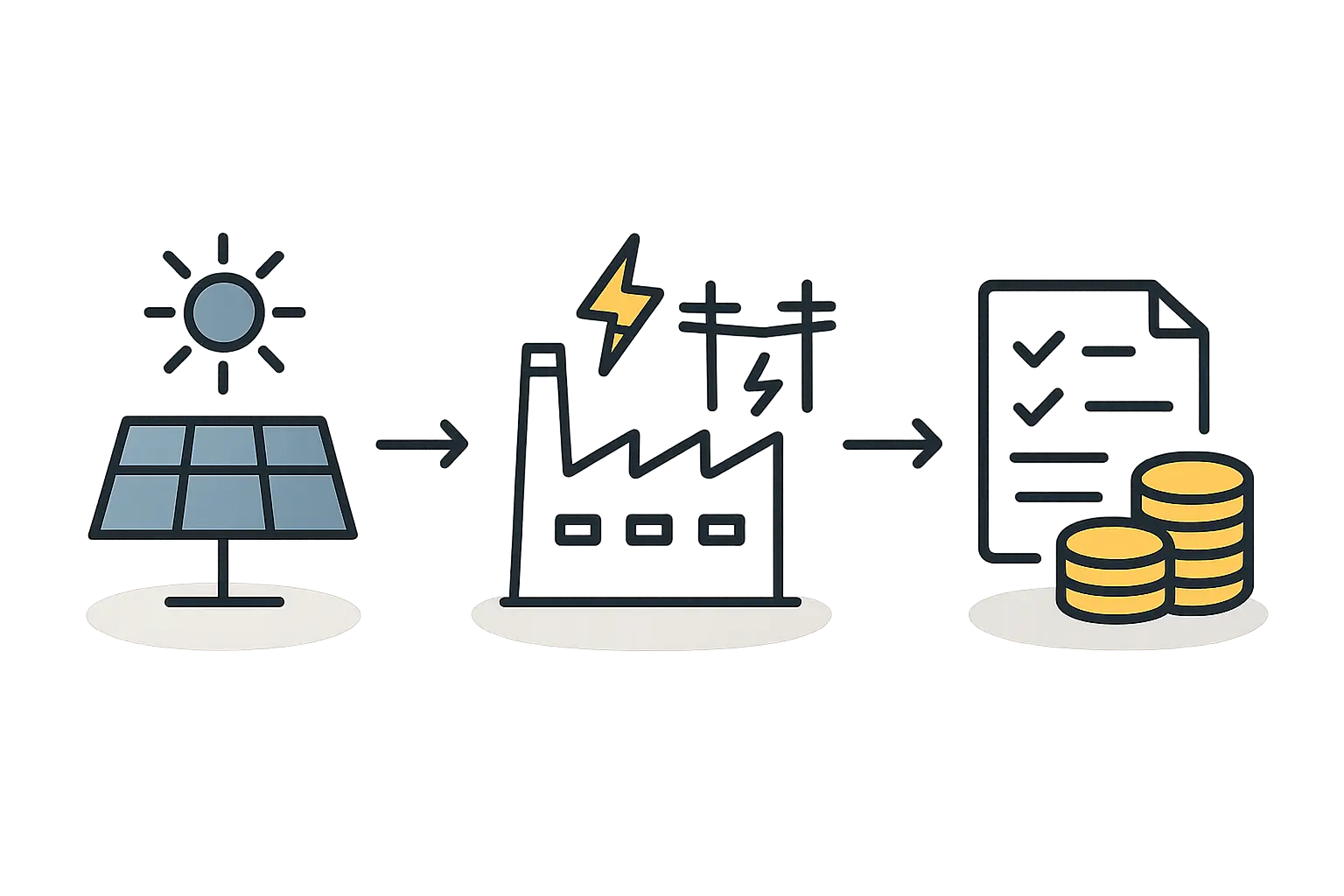
A Practical Cost Calculation Model
Here is a simplified model for forecasting the annual cost for a 50 MW factory operating in Estonia.
Assumptions:
- Annual Consumption: 2,500 MWh
- Average Nord Pool Spot Price: 100 EUR/MWh (a conservative historical average, subject to high volatility)
- Average Network Fee: 10 EUR/MWh
- Combined State Levies: 2.13 EUR/MWh (Renewable Energy Fee + Excise Duty)
Calculation Steps:
-
Baseline Energy Cost:
2,500 MWh × 100 EUR/MWh = 250,000 EUR -
Network Service Cost:
2,500 MWh × 10 EUR/MWh = 25,000 EUR -
State Levies Cost:
2,500 MWh × 2.13 EUR/MWh = 5,325 EUR -
Total Estimated Annual Cost (excluding VAT):
250,000 EUR + 25,000 EUR + 5,325 EUR = 280,325 EUR
This model provides a baseline, but its greatest vulnerability lies in the spot price assumption. For example, if geopolitical events or market conditions were to push the average spot price to 150 EUR/MWh for the year, the total energy cost would increase by 125,000 EUR to over 405,000 EUR. Any robust financial plan must address this level of uncertainty when considering how to start a solar panel manufacturing business.
Mitigating Volatility: The Role of On-Site Solar Generation
A unique strategic opportunity for a solar module factory lies in using its own product to control a primary operational cost. Installing a solar photovoltaic (PV) system on the factory roof creates a natural hedge against volatile electricity prices.
The logic is straightforward: a factory’s peak operational hours and energy demand often occur during the daytime, which directly corresponds to the peak generation hours of a solar PV system. This alignment allows the factory to consume its own generated power, avoiding exposure to high midday spot prices and reducing its reliance on the grid.
A Simple Business Case:
A typical factory layout and building requirements for solar manufacturing can often support a large rooftop PV system. Let us assume a 500 kWp installation.
In Estonia’s climate, this system could generate approximately 450 MWh of electricity annually.
This self-generated power directly offsets grid consumption. The savings include not only the volatile spot price but also the network fees and levies associated with that energy.
Potential Annual Savings: Assuming an average avoided cost of 112 EUR/MWh (spot price + fees), the savings would be: 450 MWh × 112 EUR/MWh = 50,400 EUR per year.
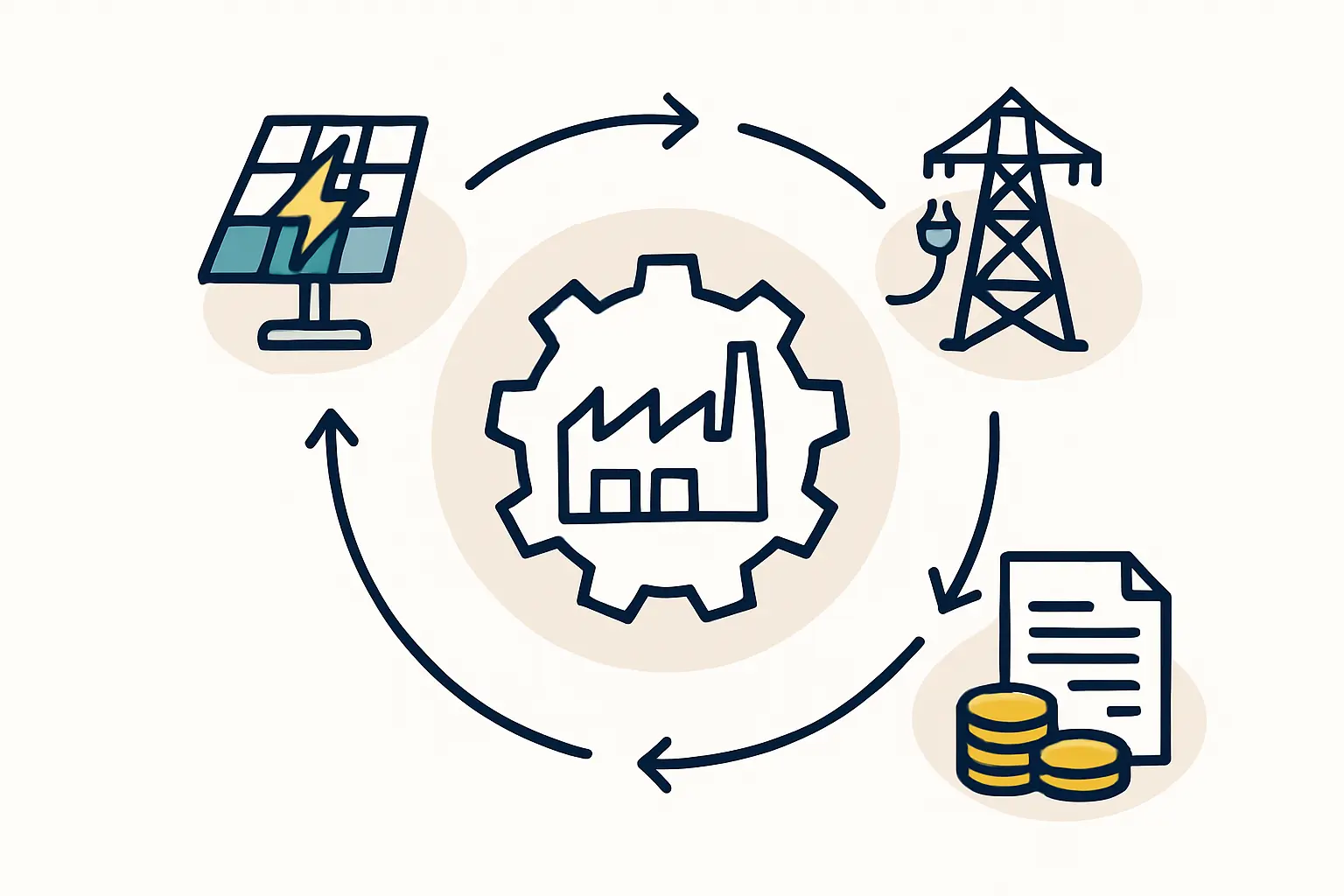
This approach transforms a portion of the energy cost from a volatile variable into a predictable cost based on the initial solar investment. It also enhances the company’s energy independence—a critical asset in an unpredictable market.
Frequently Asked Questions (FAQ)
What is the difference between a fixed-price and a spot-price electricity contract?
A spot-price contract exposes the consumer directly to the hourly fluctuations of the Nord Pool market. A fixed-price contract locks in a single rate for a set period. While a fixed price offers predictability, the supplier prices in a risk premium, meaning the average cost is often higher than the spot market average over the long term. Large industrial consumers may use a combination of both strategies.
How does a 24/7 operation affect energy costs compared to a single-shift operation?
A 24/7 operation consumes more energy overall but can strategically benefit from lower overnight electricity prices on the spot market. A single-shift daytime operation has higher consumption during peak price hours but may align better with on-site solar generation, presenting a different set of optimization challenges.
Can a new factory get a connection to the high-voltage grid easily?
Connecting a large industrial facility requires coordination with the local Distribution System Operator. The process involves technical assessments of grid capacity at the proposed location and can take several months. This should be investigated early in the site selection process.
Are there government subsidies in Estonia for on-site renewable generation?
Since incentive programs for renewable energy change over time, it is essential to consult with local authorities or energy consultants to identify available grants, tax credits, or favorable feed-in tariffs for commercial-scale solar installations during the planning phase.
Conclusion: From Cost Center to Strategic Asset
Energy is far more than a simple line item in a business plan; it is a major, dynamic operational cost that demands strategic management. For any entrepreneur looking to establish a solar production line, a deep understanding of the local energy market—be it in Estonia or any other region—is fundamental to long-term success.
By deconstructing the components of an electricity bill, modeling for volatility, and strategically integrating on-site power generation, investors can mitigate significant financial risks. Such detailed operational planning is a core component of successful turnkey solar production lines, transforming what could be a liability into a source of competitive advantage and resilience.


